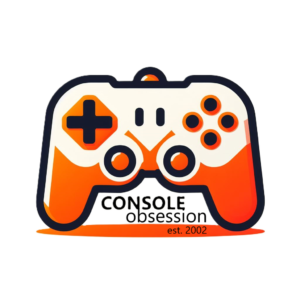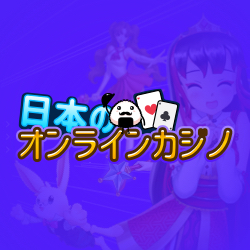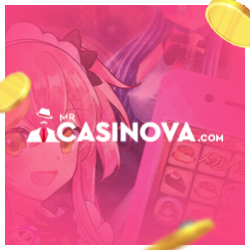The Legend of Zelda: Skyward Sword Wii Review
Publisher – Nintendo – Developer – Nintendo – Genre – Action Adventure – Players – 1 – Age Rating – 12+ – Other console/handheld formats – N/A
Being introduced to the world 25 years ago, The Legend of Zelda is one of Nintendo’s most enduring of franchises, and in that period the basic formula has largely stayed the same, with the occasional flirt with invention with the likes of Majora’s Mask. That it has almost always remained as the true definition of a classic game is testament to the wonderful fundamentals that the legendary designer Shigeru Miyamoto and his team first laid out all those years ago.
For many however, in spite of it being the first Zelda on a then fresh Wii console, for the previous iteration, Twilight Princess, the foundations were starting to feel a mite too familiar and the fact that it was a homage to one of the most beloved Zelda games, Ocarina of time, was for them somewhat of a misstep, whilst the fighting didn’t offer the one-to-one motion that many expected. The visuals on the other hand were bland and devoid of the soul of the surprising but delightful and utterly charming cartoon style of its GameCube predecessor, The Windwaker.
The Legend of Zelda: Skyward Sword may have arrived in The Wii’s advanced years, though it’s the first of the series to be developed solely for the console and takes advantage of the advancements of the severely underutilized MotionPlus, which was introduced to Wii motion sensing a couple of years ago.
In terms of setting, it takes place in the sky and, somewhat befitting of a 25th anniversary game, Skyward Sword goes all the way back to the beginning, with this particular Link being the first in a long line of them. It also, unsurprisingly, allows you to learn more about the back-story of the universe, such as, amongst other things, the creation of the Master sword, and such knowledge will come as a delight to many a long time fan.
The story is somewhat surprising in the fact that Link and Zelda have known each other for years and in that intervening time have forged a strong friendship, resulting in a more emotional tale. There are no voices, though the grunts and such aren’t without a level of personality.
Visually, it’s far more appealing than Twilight Princess, being much more colourful and, with its cartoon style, is drowning in personality that drab grey and brown rarely manages to bring. Impressionism is an inspiration, with further away objects slowly bleeding into view as you advance closer to them, whilst character designs are wonderfully diverse and characterful.
The dungeons, whilst never the most complex that Zelda has seen, are nevertheless wonderfully designed, with one of the most elaborate allowing you to shift between two distinct time periods, giving Nintendo the chance to put together some satisfying and intelligent puzzles. Perhaps for some, Skyward Sword will have too much in the way of handholding to truly satisfy them much of the time, but it certainly isn’t without challenge.
In between all the dungeon trawling, you’re also able to explore the skies, on your trusty bird. This represents Skyward’s Sword’s overworld environment, and whilst by Zelda standards some might consider it somewhat empty, there’s still a fair bit to find amongst the clouds.
Link’s equipment consists of all the classics: the bombs, the slingshot and the crossbow. New gadgets include the flying beetle, which can be used to access out of reach areas, and the Gust Bellows, which can be used to blow sand away. Even the simplest items are enjoyable to use with their satisfying ways of control.
With an all new loot system, which sees items dropped by enemies or found lying about, some of your equipment is able to be upgraded, whilst, similarly, more potent portions can be made. It never has the complexity of such systems in other games, though it’s still nevertheless a welcome additional layer to the Zelda series, though item collecting isn’t without its annoyances, as every time you load the game you’re given a description of items you pick up, regardless of if you’re already familiar with it or not, needlessly slowing down the pace of the game.
This particular incarnation of Link is the most mobile yet of Nintendo’s hero, being able to run up walls by simply sprinting into them. Also granting a fresh twist is the stamina meter, of which will decrease whenever you’re climbing, sprinting or using the spin attack. Completely losing stamina will leave Link in a state of exhaustion, where his movement will become sluggish and he is left helpless and unable to attack. Managing stamina is a common concept throughout that really goes someway to shaking up the formula.
Combat is the area where the MotionPlus controls primarily shine, allowing for much more control and lifting it far above the waggling that made up Twilight Princess’s combat. Certain enemies require to be attacked with slashes from different directions before you’re able to defeat them, granting a more strategic dimension to many of the fights. It works well, with only the occasional misinterpretation of my intentions in my experience, and is a much truer representation of what was expected from Twilight Princess.
Structurally, Skyward Sword is the most surprising Zelda game in a number of years. Whilst it’s the same concoction of dungeon trawling, puzzle solving and fighting that have always been hallmarks of the series, and whilst the satisfying little musical samples remain when you find items, occasionally however it will veer off from this formula in unexpected ways, with the journey to each dungeon often being a mini dungeon in itself in a sense, some instances of which could be considered by some as padding to artificially expand the lifespan of the game.
Skyward Sword, whilst not the most intricate of the series, is as carefully and cleverly designed as always, but those that have long been seeking a dramatic reconstruction of Zelda will once again come away disappointed, though will perhaps be encouraged that it’s the most daring Nintendo has been with the series for quite some time, granting new twists to old conventions and perhaps, at the same time, offering a glimpse at the future of the long cherished franchise, but at this point in time, this is a glorious send off for the Wii, as well as being one of the strongest Zelda games built – but shaking things up a bit – on the existing framework, and that’s no small praise.
9/10









